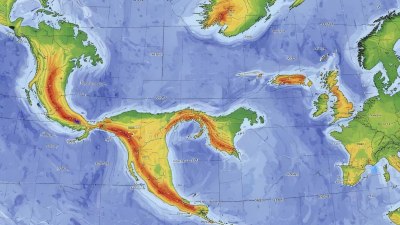Why Weather and Empathy Go Hand in Hand
Explore the fascinating connection between weather patterns and human empathy, revealing how climate impacts emotions and social behaviors.

Weather affects much more than just the environment; it plays a pivotal role in shaping human emotions and interactions. Across cultures and societies, the weather is often linked not only to moods but also to the way people empathize with one another. Understanding this relationship offers intriguing insights into human psychology and social behavior.
Empathy, defined as the ability to understand and share the feelings of another, is crucial for social cohesion and emotional intelligence. Weather conditions can modulate empathy levels, influencing how individuals perceive and respond to the emotional states of others. This article delves into the scientific and psychological aspects that underscore the connection between weather and empathy.
How Weather Influences Human Emotions
Human beings are naturally influenced by their surrounding environment. Weather conditions such as sunlight, temperature, humidity, and atmospheric pressure have been studied extensively for their effects on mood and behavior. For instance, exposure to sunlight increases the production of serotonin, a neurotransmitter associated with feelings of wellbeing and happiness, which can enhance empathy by making people more sociable and emotionally available.
Conversely, gloomy or rainy weather has been linked to increased feelings of sadness or lethargy, often resulting in social withdrawal. However, this does not necessarily diminish empathy. In some cases, individuals experiencing melancholic weather may become more introspective and sensitive to others’ emotional states, fostering a deeper empathetic connection. This complex relationship indicates that weather can both positively and negatively influence empathy depending on context and individual differences.
The Role of Seasonal Changes in Emotional Connectivity
Seasonal variations profoundly affect human mood and behavior. Seasonal Affective Disorder (SAD) is a well-known condition wherein individuals experience depressive symptoms during certain seasons, particularly in winter. The reduced exposure to daylight disrupts circadian rhythms and serotonin levels, causing emotional and social difficulties.
Individuals with SAD often report feelings of isolation, yet paradoxically, this condition can make them more attuned to others’ struggles, increasing empathetic understanding. The cyclical nature of the seasons means empathy fluctuates across the year, with certain times fostering more connected social interactions while others inspire solitude and reflection.
Atmospheric Conditions and Social Behavior
Atmospheric pressure changes, temperature extremes, and humidity levels also impact human behavior. High temperatures are commonly associated with irritability and reduced patience, which may inhibit empathetic responses. People tend to be less tolerant and more prone to conflict when overheated, reducing the likelihood of empathetic engagement.
Conversely, moderate and comfortable temperatures generally promote relaxed and positive moods, encouraging social interactions and empathetic exchange. Humidity influences comfort levels and can affect cognition and emotional processing, further shaping how individuals respond to others in their social environment.
Cultural Perspectives on Weather and Empathy
Cultures worldwide interpret and respond to weather in diverse ways, framing empathy within distinct contexts. For example, in Scandinavian countries where long, dark winters prevail, social customs and cultural narratives emphasize solidarity and mutual support during harsh weather. This cultural adaptation enhances empathy as a collective survival mechanism.
In contrast, cultures in tropical regions where warmth and sunshine dominate may associate weather with vitality and sociability. These societies might display empathy through communal activities facilitated by pleasant weather, reinforcing social bonds. Such cultural patterns demonstrate that weather not only affects individual empathy but also molds collective empathetic practices.
Weather as a Metaphor for Emotional States
Throughout literature and the arts, weather is frequently employed as a metaphor for emotions and interpersonal dynamics. Storms and rain often symbolize turmoil and sadness, while sunshine represents happiness and hope. These symbolic uses reflect a deep-seated human tendency to link external atmospheric conditions with internal emotional experiences.
This metaphorical relationship reinforces empathy by providing a shared language to express feelings. When people describe their emotions using weather imagery, it can facilitate understanding and connection by creating vivid, relatable references that evoke empathy.
Psychological Mechanisms Behind Weather-Empathy Links
Scientific studies suggest several psychological mechanisms that connect weather to empathy. One such mechanism involves mood contagion, the phenomenon where an individual's mood influences the moods of those around them. Positive weather-induced moods can spread through social networks, encouraging empathetic behavior.
Another mechanism is cognitive appraisal, where individuals assess environmental cues and adjust emotional responses accordingly. Pleasant weather cues may lead to more optimistic appraisals of social situations, enhancing empathy, while unpleasant weather cues could trigger defensive emotional states that limit empathetic openness.
Impact of Weather on Empathic Decision-Making
Weather can influence not only emotional empathy but also cognitive empathy, which involves understanding others' perspectives and intentions. Empathic decision-making, such as helping behaviors or conflict resolution, can vary in different weather conditions. For example, studies have found higher rates of charitable donations and pro-social behavior during sunny days compared to rainy or cold days.
This variation suggests that weather impacts the motivation to engage empathetically with others. Suitable weather conditions may lower psychological barriers, making individuals more willing to invest time and resources in empathetic acts.
Modern Challenges: Climate Change and Empathy
The mounting challenge of climate change introduces new dimensions to the weather-empathy relationship. Extreme weather events — floods, hurricanes, droughts — dramatically affect communities, eliciting varied empathetic responses globally. People directly impacted often garner immediate empathy and support, but prolonged crises can lead to empathy fatigue, reducing long-term empathetic engagement.
Raising awareness about climate change’s emotional and social effects encourages empathetic responses not only towards affected individuals but also towards the planet. This broader empathy supports collective action and resilience-building initiatives.
Strategies to Harness Weather’s Influence on Empathy
Understanding the influence of weather on empathy offers valuable strategies for enhancing social harmony and emotional wellbeing. Creating environments that mimic favorable weather conditions, such as increased natural light in workplaces and schools, can boost mood and empathetic interactions.
Mental health practices like mindfulness and emotional regulation training can help individuals manage weather-related mood shifts, preserving empathy during adverse conditions. Additionally, fostering culturally sensitive community programs that recognize weather-empathy dynamics can strengthen social support networks.
Empathy’s Role in Weather-Related Disaster Response
Empathy plays a critical role in responding to weather-induced disasters. Rapid empathetic responses enable timely assistance and community cohesion during emergencies. Empathy motivates volunteerism, donations, and policy advocacy, which are crucial for effective disaster relief and recovery.
Training first responders and community leaders in empathy skills enhances their capacity to support affected populations compassionately and efficiently. Incorporating empathy into disaster planning acknowledges the profound human element in weather-related crises.
Technological Innovations and Empathy in Changing Weather Contexts
Advances in technology, including weather forecasting apps and virtual reality, offer new tools for understanding and cultivating empathy related to weather experiences. Virtual reality simulations of extreme weather scenarios can increase awareness and emotional connection, fostering deeper empathy for communities facing such challenges.
Artificial intelligence-driven communication platforms can monitor emotional states influenced by weather, providing personalized mental health support that preserves empathetic capacities. These innovations hold promise for mitigating the negative effects of weather on empathy while amplifying positive influences.
Future Research Directions
Ongoing research is essential to unravel the complex interplay between weather and empathy fully. Multidisciplinary studies combining psychology, climatology, sociology, and neuroscience can yield holistic insights. Such research may explore how microclimates within urban environments affect social empathy or how climate adaptation strategies influence emotional resilience and empathy.
Investigating individual differences, such as personality traits and cultural backgrounds, will refine understanding of weather’s varied impacts on empathy. This knowledge can improve the design of interventions aimed at maximizing empathetic connections regardless of weather conditions.
The dynamic relationship between weather and empathy underscores the profound ways in which environment shapes human experience. From influencing daily mood fluctuations to affecting responses to global challenges, weather-related factors are integral to empathetic social living. Harnessing this knowledge can enhance emotional wellbeing, cultural cohesion, and collective resilience in an ever-changing climate.











